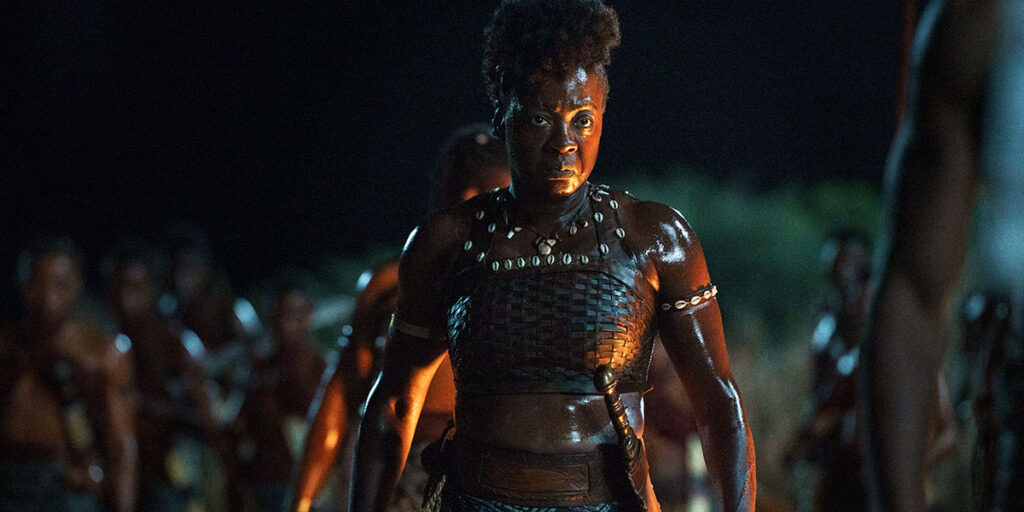The USC Annenberg Inclusion Initiative has released a new report analyzing the U.S.-based 126 movies and 180 series released on Netflix in 2018 and 2019. “Inclusion in Netflix Original U.S. Scripted Films & Series” considers representation on both sides of the camera. According to its executive summary, the report found that more than half (52 percent) of the streamer’s films and series were driven by women and/or girls in 2018 and 2019.
“There was an increase in female-identified protagonists over time: 2019 (55.2%) featured more stories with women and girls at the center than 2018 (48.6%),” the report notes. Of main characters in Netflix projects, 44.1 percent were female-identified and 55.8 percent male-identified. Only one main character was nonbinary. Among all speaking characters in 2018 and 2019, there was a wider gender gap. Nearly 39 percent of speaking characters were female-identified, as opposed to the 61.2 percent male-identified. Less than one percent of all speaking characters were nonbinary.
“Netflix reflected gender equality in the most important roles in their fictional narratives. Stated differently, as the centrality of the on screen role increased from speaking character to protagonist, Netflix was more likely to cast a girl or woman,” the exec summary explains. “That said, Netflix missed the mark in terms of gender equality across all speaking characters in its content.”
About 32 percent of leads and co-leads of the considered films and series were from underrepresented racial/ethnic groups. “While this overall statistic was notably below the U.S. Census (39.9%), the percentage of underrepresented leads/co leads increased significantly over time from 26.4% in 2018 to 37.3% in 2019.” Thirty-four percent of all main cast members were from an underrepresented racial/ethnic group, and 36.2 percent of speaking characters.
Of Netflix films and series’ leads and co-leads, about 30 percent were white females and 13.3 percent underrepresented females. White females represented 28.6 percent of main cast members, underrepresented females 15.6 percent, white males 37.3 percent, and underrepresented males 18.5 percent. “Compared to U.S. Census, Netflix main cast overrepresented white males, approached proportional representation for white females and underrepresented males, but fell short for underrepresented females,” the report concludes.
Large numbers of Netflix projects in 2018 and 2019 rendered women and girls of color completely invisible. More than 96 percent of films and series included zero females identified as American Indian/Alaskan Native or Native Hawaiian/Pacific Islander. About 68 percent of stories portrayed zero Latinas, 85 percent featured no Middle Eastern/North African girls or women, 29.1 percent had no Black females, and 48 percent erased Asian females. Meanwhile, just 4.6 percent of Netflix movies and shows included zero white females.
The numbers of LGBTQ characters and characters with disabilities in Netflix projects are also quite dismal. Just 2.3 percent of stories featured LGBTQ leads or co-leads, even though LGBTQ folks make up 12 percent of the U.S. population. Only 5.3 percent of stories were led or co-led by characters with a disability, as compared to the 27.2 percent of the U.S. population who live with a disability.
Behind the scenes, women comprised less than a quarter of film directors (23.1 percent) a figure that’s far from parity yet still “substantially higher” than the number of women directors of top-grossing theatrical films (4.5 percent in 2018, 10.7 percent in 2019). Nearly 30 percent of Netflix show creators were women. The streamer “was significantly more likely than the broader industry to showcase women creators (Netflix=26.9%, industry=22% in 2017/2018; Netflix=32.2%, industry=25% in 2018/2019),” the summary finds.
About 17 percent of Netflix film directors were from an underrepresented racial/ethnic group, and 12.2 percent of series creators. Breaking down those numbers further, it becomes clear that Netflix needs to do some serious work to address the racial and gender gap among its off-camera leadership roles. Approximately two-thirds of directors were white men, as were 62 percent of series creators. White women made up 16.9 percent of directors, and 25.9 percent of creators, while women of color represented, respectively, 6.2 percent and 3.8 percent. Men from underrepresented racial/ethnic groups comprised 10.8 percent of directors and 8.4 percent of series creators.
With “Inclusion in Netflix Original U.S. Scripted Films & Series,” the Inclusion Initiative has concluded that “for Netflix, inclusion is more than a marketing slogan, and serves to guide decision-making.” While it is leading its competitors in its hiring of women directors and creators, and boasts a TV and film slate largely led by female characters, it still has some major blind spots it needs to address. As the study illustrates, the streamer must work to increase the representation of women of color, the LGBTQ community, and folks living with disabilities.







